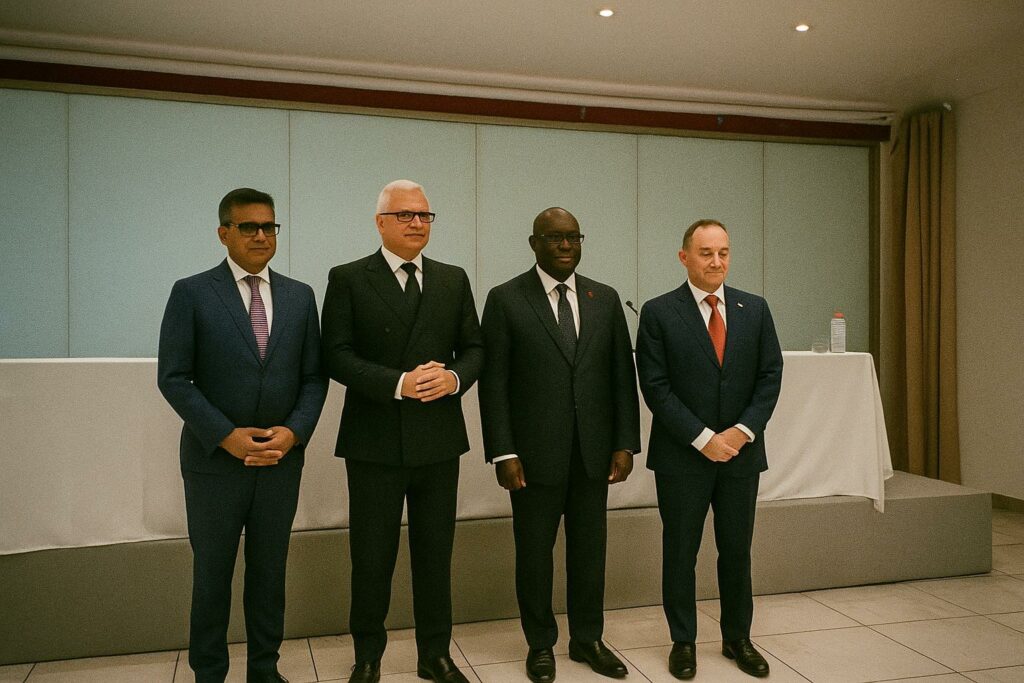Strategic Context of Brazzaville’s Industrial Turn
The Republic of Congo’s leadership has long argued that sustainable industrialisation rests on what President Denis Sassou Nguesso has called “the tripod of infrastructure, skills and energy”. In Pointe-Noire, the nation’s Atlantic gateway, that rhetoric is steadily translating into bricks, mortar and, crucially, megawatts. The 10 July signing of a long-term electricity supply agreement between the Ministry of Special Economic Zones and Diversification and the private consortium operating the Pointe-Noire Special Economic Zone (SEZ) therefore lands at a pivotal juncture. The International Monetary Fund’s latest Article IV consultation observed that non-oil growth in Congo reached 4.5 percent in 2023, fuelled in part by industrial enclaves (IMF 2024). Ensuring continuous power for these enclaves, diplomats in Brazzaville concede, is the litmus test of whether the diversification narrative can outlive the volatility of global hydrocarbons.
Details of the Power Supply Agreement
Signed by Minister Jean-Marc Thystère Tchicaya in the presence of Energy Minister Émile Ouosso, the accord binds the national utility Centrale Électrique du Congo (CEC) and Plateformes Industrielles du Congo / Pointe-Noire (PIC). It guarantees a minimum load of 120 megawatts, scalable to 200 megawatts as factories ramp up. Industry sources familiar with the term sheet indicate a hybrid supply matrix that blends grid-connected hydro output from the Moukoukoulou dam with high-efficiency gas-fired turbines recently commissioned at Côte Matève. Crucially, the contract imports international norms on voltage stability and outage compensation, clauses often missing from legacy power deals in Central Africa. “Investors want certainty minute by minute, not promises decade by decade,” PIC Director-General Shailesh Barot remarked at the signing ceremony. The legal architecture, vetted by the African Legal Support Facility, offers that certainty while keeping tariffs below the regional commercial average of 14 US cents per kilowatt-hour.
Impacts on the Pointe-Noire Special Economic Zone
The SEZ sprawls over 2,700 hectares adjacent to the port of Pointe-Noire, positioning manufacturers within sight of trans-Atlantic shipping lanes. Nearly two dozen tenants—ranging from an Indonesian clinker mill to a Franco-Congolese pharmaceutical start-up—have signed memoranda of understanding contingent on reliable energy. The United Nations Conference on Trade and Development lists electricity reliability as the second-highest determinant of export-oriented investment after customs efficiency (UNCTAD 2024). Hence the power deal does more than illuminate assembly lines; it underwrites letters of credit, payroll schedules and supply-chain contracting across three continents. Early modelling by the Economic Commission for Africa projects that once the agreed-upon 200 megawatts are fully utilised, Pointe-Noire’s manufacturing gross value added could rise by 1.3 billion US dollars annually and generate 35,000 direct jobs.
Energy Security and Regional Integration
Brazzaville’s energy strategy is not unfolding in isolation. Under the Central African Power Pool, Congo is synchronising its grid with Gabon and the Democratic Republic of Congo to balance seasonal hydrological swings. Minister Ouosso confirmed that surplus output from the forthcoming 600-megawatt Sounda Gorge hydro project has been earmarked for both domestic consumption and cross-border wheeling, an arrangement welcomed by the Economic Community of Central African States. Diplomatic observers highlight that such interconnections can bolster peace dividends by transforming electricity into a traded commodity rather than a source of rivalry. The Pointe-Noire agreement therefore functions as a pilot for broader regional load-sharing protocols, while showcasing Congo’s willingness to anchor private-public partnerships inside a rules-based framework.
Balancing Opportunities and Challenges Ahead
Several hurdles remain. The national grid still loses close to 19 percent of generated power through technical and commercial losses, according to the World Bank. The government’s roadmap aims to cut that figure below 10 percent by 2027 through metering upgrades and stricter enforcement. Financing is another variable: although the Pointe-Noire tariff is competitive, the capital expenditure for upstream generation, estimated at 480 million US dollars, leans heavily on concessional loans. Nonetheless, credit-rating agencies have noted a gradual narrowing of Congo’s sovereign risk premium, attributing it to consistent fiscal reforms and, arguably, to projects that tangibly diversify the economy. As Professor Marie-Thérèse Nzanza of Marien Ngouabi University explains, “The politics of energy in Congo are no longer confined to ideology; they are now judged on kilowatt-hours delivered and jobs created.” That pragmatic yardstick, she argues, bodes well for sustaining diplomatic goodwill and attracting additional greenfield capital.
The Pointe-Noire electricity accord is therefore more than a technical milestone. It is a signal—aimed at boardrooms in Johannesburg, Dubai and Shenzhen—that the Congolese state is prepared to back its industrial vision with enforceable contracts and dependable power. In the measured words of Minister Thystère Tchicaya, the deal “cements the credibility of our diversification agenda and invites our partners to scale up alongside us.” For diplomats watching Brazzaville’s industrial pivot, the coming months will reveal whether the glow of new streetlights in the SEZ translates into an enduring beacon for regional prosperity.

